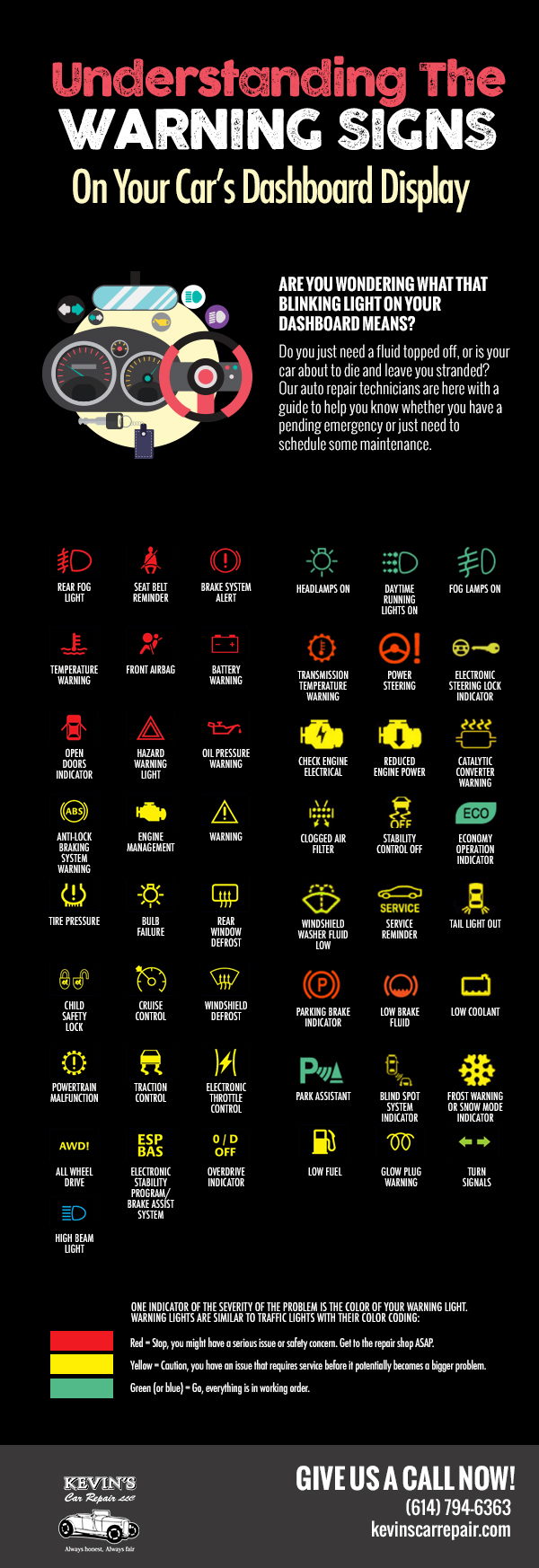Interested About Those Dashboard Warning Lights In Your Car? Figure Out What They Imply For Your Vehicle'S Health And Safety
Interested About Those Dashboard Warning Lights In Your Car? Figure Out What They Imply For Your Vehicle'S Health And Safety
Blog Article
Post By-Lim Torres
When you're behind the wheel, those beautiful caution lights on your dashboard can be a little bit puzzling. Do you understand what they're attempting to tell you regarding your cars and truck's health and wellness? Comprehending the value of these lights is vital for your safety and security and the long life of your lorry. So, the next time among those lights appears, would not you intend to decode its message precisely and take the needed actions to address it?
Common Caution Lights and Interpretations
Identify common warning lights in your auto and understand their significances to guarantee secure driving.
One of the most regular warning lights consist of the check engine light, which signifies concerns with the engine or emissions system. If this light comes on, it's critical to have your vehicle inspected promptly.
The oil pressure cautioning light suggests low oil pressure, requiring instant focus to stop engine damages.
A blinking battery light could recommend a faulty billing system, potentially leaving you stranded if not attended to.
The tire stress monitoring system (TPMS) light informs you to low tire stress, influencing automobile stability and fuel performance. Disregarding this might lead to harmful driving conditions.
The ABS light suggests an issue with the anti-lock braking system, jeopardizing your capability to stop rapidly in emergencies.
Last but not least, the coolant temperature level cautioning light warns of engine overheating, which can cause serious damages otherwise fixed swiftly.
Understanding these common caution lights will help you resolve problems immediately and preserve safe driving problems.
Significance of Prompt Interest
Understanding the common warning lights in your automobile is only the initial step; the significance of promptly attending to these warnings can't be highlighted enough to ensure your safety and security when driving.
When https://www.clickondetroit.com/news/michigan/2022/07/21/aaa-tips-for-keeping-your-car-running-smoothly-and-your-kids-safe-as-heatwave-hits-michigan/ illuminates on your control panel, it's your automobile's means of communicating a possible problem that requires focus. Ignoring these warnings can result in more extreme troubles later on, compromising your safety and security and possibly costing you more in repairs.
Prompt interest to alerting lights can stop malfunctions and crashes. As an example, a blinking check engine light can suggest a misfire that, if left ignored, can cause damage to the catalytic converter. Resolving https://jeffreytnhcv.blogdanica.com/29870111/achievement-account-sprucing-up-a-forsaken-car-through-comprehensive-explaining without delay can save you from an expensive fixing.
In on front page , a brake system alerting light might indicate low brake fluid or worn brake pads, critical components for your safety when driving.
DIY Troubleshooting Tips
If you notice a caution light on your control panel, there are a few DIY repairing tips you can try prior to looking for expert assistance.
The first step is to consult your vehicle's manual to recognize what the particular warning light suggests. In cardrtailing can be as basic as a loosened gas cap activating the check engine light. Tightening the gas cap may deal with the trouble.
Another usual problem is a reduced battery, which can cause different advising lights. Checking the battery connections for corrosion and guaranteeing they're safe and secure could fix the trouble.
If a warning light continues, you can attempt resetting it by detaching the automobile's battery for a couple of mins and after that reconnecting it. Furthermore, examining your car's fluid levels, such as oil, coolant, and brake liquid, can assist repair alerting lights connected to these systems.
Final thought
To conclude, recognizing your auto's caution lights is necessary for keeping your automobile running efficiently and securely. By immediately addressing these notifies and recognizing what they suggest, you can avoid costly repairs and prospective break downs.
Bear in mind to consult your vehicle's handbook for certain information on each alerting light and take action accordingly to ensure a trouble-free driving experience.
Remain notified, stay secure when traveling!
